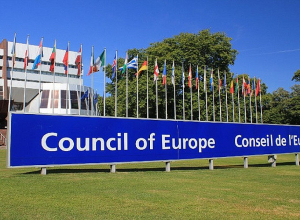Reasons for Decline of US-Armenia Trade

The bilateral relations between the Republic of Armenia and the United States have always been distinguished by their multifaceted and unique nature. For instance, the US has been the major donor country for humanitarian aid to Armenia since 2004. The assistance provided by that country by years has even exceeded the 50 million USD threshold, making up 73% of the total humanitarian aid received from all the countries.
Nevertheless, the economic relations between Armenia and the USA do not stand out by being close. Moreover, as statistical data show, the trade between the two countries has continuously declined during the recent years. The factors accounting for such a decline are mentioned below.
Exports
According to published statistical data, the exports from Armenia to the US dropped by 26.8% in 2016, reaching 38.7 million USD compared to the previous 52.9 million USD. As a result, the US has become Armenia’s 11th largest partner country in terms of exports, with just a 2.2% share in total exports from Armenia.
 As can be seen from the figure above, exports to the US continuously grew during 2008-2011, almost doubling over three years. However, the export volumes started to drop since 2014, reaching 38.7 million USD from the previous 87.5 million USD. The reason for such a sharp change of trends can be found in the study of the export commodity structure. Thus, in the export commodity structure from Armenia to the US, the largest share belongs to “aluminum and items made from it” commodity group, which made up about 90% of total exports for some years. Thus, the total volume of exports to the US largely depends on the changes in volumes and prices of this single commodity group.
As a consequence, the approximately 109% increase in international prices for aluminum resulted in doubling of exports to the US. Nevertheless, in spite of the continuous growth in prices for aluminum since 2015, the exports from Armenia to the US have not returned to their previous level. It can be claimed that the reason for that may lie in the GSP+ preferential customs regime granted to Armenia by the EU since 2014. Unlike the already existing GSP regime, this new regime, among other products, gives customs privileges for export of aluminum to the EU. As a result, the Armenian businessmen who export aluminum have been reoriented towards European markets (Germany, Poland, Netherlands, and etc.), considering the logistics and customs advantages of those countries over the US.
Imports
As it is expressed in the attached figure, similar decline tendencies have been observed in the imports from the US to Armenia. In 2016, 73 million USD worth commodities were imported from the US to Armenia, which is less than the figure recorded in the previous year by 31.8%. As a consequence, the US has become Armenia’s 12th largest partner in terms of imports, having a 2.2% share in the total imports.
On the other hand, unlike exports, the import commodity structure from the US is more diversified. Largest import commodity groups include meat and its sub-products (17%), ground transportation means (15%), nuclear reactors (13.5%), as well as optical devices (11%). In case of all these commodity groups, the EAEU customs tariffs are noticeably higher than the tariffs in Armenia before EAEU membership, which has made American products artificially uncompetitive, contributing to the sharp decline in imports from the US since 2015.
Andranik Manukyan
“Union of Informed Citizens”
As can be seen from the figure above, exports to the US continuously grew during 2008-2011, almost doubling over three years. However, the export volumes started to drop since 2014, reaching 38.7 million USD from the previous 87.5 million USD. The reason for such a sharp change of trends can be found in the study of the export commodity structure. Thus, in the export commodity structure from Armenia to the US, the largest share belongs to “aluminum and items made from it” commodity group, which made up about 90% of total exports for some years. Thus, the total volume of exports to the US largely depends on the changes in volumes and prices of this single commodity group.
As a consequence, the approximately 109% increase in international prices for aluminum resulted in doubling of exports to the US. Nevertheless, in spite of the continuous growth in prices for aluminum since 2015, the exports from Armenia to the US have not returned to their previous level. It can be claimed that the reason for that may lie in the GSP+ preferential customs regime granted to Armenia by the EU since 2014. Unlike the already existing GSP regime, this new regime, among other products, gives customs privileges for export of aluminum to the EU. As a result, the Armenian businessmen who export aluminum have been reoriented towards European markets (Germany, Poland, Netherlands, and etc.), considering the logistics and customs advantages of those countries over the US.
Imports
As it is expressed in the attached figure, similar decline tendencies have been observed in the imports from the US to Armenia. In 2016, 73 million USD worth commodities were imported from the US to Armenia, which is less than the figure recorded in the previous year by 31.8%. As a consequence, the US has become Armenia’s 12th largest partner in terms of imports, having a 2.2% share in the total imports.
On the other hand, unlike exports, the import commodity structure from the US is more diversified. Largest import commodity groups include meat and its sub-products (17%), ground transportation means (15%), nuclear reactors (13.5%), as well as optical devices (11%). In case of all these commodity groups, the EAEU customs tariffs are noticeably higher than the tariffs in Armenia before EAEU membership, which has made American products artificially uncompetitive, contributing to the sharp decline in imports from the US since 2015.
Andranik Manukyan
“Union of Informed Citizens”



